We’ve already established that Old Money Style isn’t a fleeting trend but an expression of ingrained status and understated elegance. It’s the uniform of the man who doesn’t need his clothes to define him because his history and presence speak for themselves. However, to truly grasp this style, we need to dig deeper – into the roots of this elegance and the subtle differences that shape it.
The Hallowed Row of Tailoring: The Significance of Savile Row
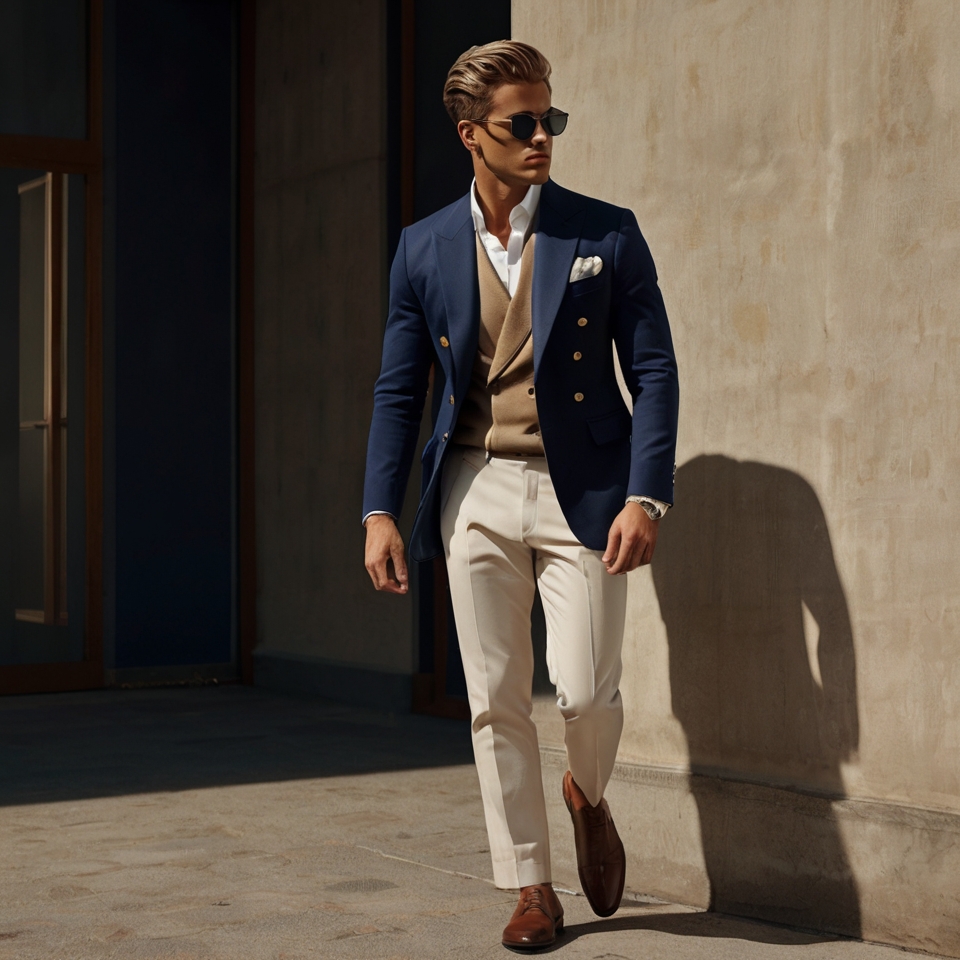
When we talk about classic menswear, all roads lead to Savile Row in London. This unassuming street in the heart of Mayfair is the epicenter of traditional tailoring and an integral part of British Old Money Style. Since the 18th century, the world’s most renowned tailors have set up shop here, crafting suits for kings, aristocrats, and the wealthiest families.
A suit from Savile Row is more than just a garment. It’s an investment, an heirloom, and a statement of unparalleled quality and craftsmanship. Every stitch is sewn by hand, the fit is bespoke to absolute perfection, and the fabrics used are of the highest caliber. Such a suit doesn’t scream for attention with loud logos or extravagant designs. Its elegance lies in its simple perfection, in the way it drapes and conforms to the body.
The relationship between a Savile Row customer and his tailor is often a lifelong one. It’s about trust, about understanding individual style and the subtle nuances that make a truly well-fitting suit. A Savile Row tailor is not just a craftsman but a consultant, guiding his clients in matters of style for decades.
Subtle Distinctions: British vs. American Old Money
While the core tenets of Old Money Style – understatement, quality, and timelessness – are present in both worlds, there are fine yet significant differences between the British and American approaches. These differences reflect their respective cultural and historical contexts.
British Old Money: Tradition and Restraint Perfected
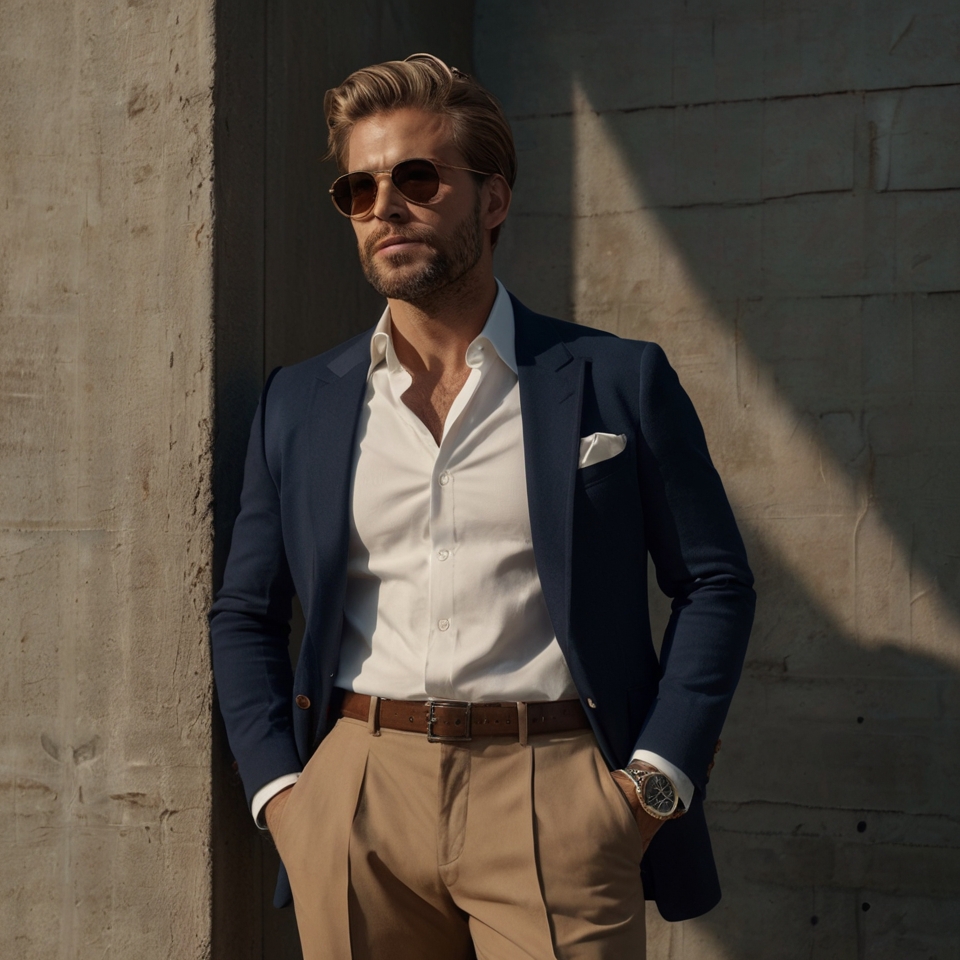
British Old Money Style is deeply rooted in tradition. It’s characterized by a certain formality and a pronounced restraint. Here, it’s less about making fashion statements and more about maintaining an established aesthetic passed down through generations.
- Stronger Emphasis on Formal Wear: The suit, especially the bespoke suit from Savile Row, plays a central role. Tweed suits for the countryside, dark suits for the city – the wardrobe is clearly structured and tied to traditional occasions.
- Classic Patterns and Muted Colors: Checks, herringbone, pinstripes in muted colors like navy, olive green, and grey dominate. Flashy patterns or bright colors are frowned upon.
- High-Quality Natural Materials: Wool, tweed, cashmere, and waxed cotton are the fabrics of choice. They speak of quality and longevity.
- Traditional Accessories: Classic leather shoes (brogues, loafers), understated ties with subtle patterns, pocket squares, and high-quality watches (often heirlooms) complete the look. Logos are absolutely taboo.
- A Touch of Sporting Heritage: Activities like polo, hunting, and sailing have influenced the style. Elements like polo shirts, sturdy jackets, and comfortable chinos find their place, but always in a refined and understated manner.
American Old Money: Casualness and Pragmatism with Class
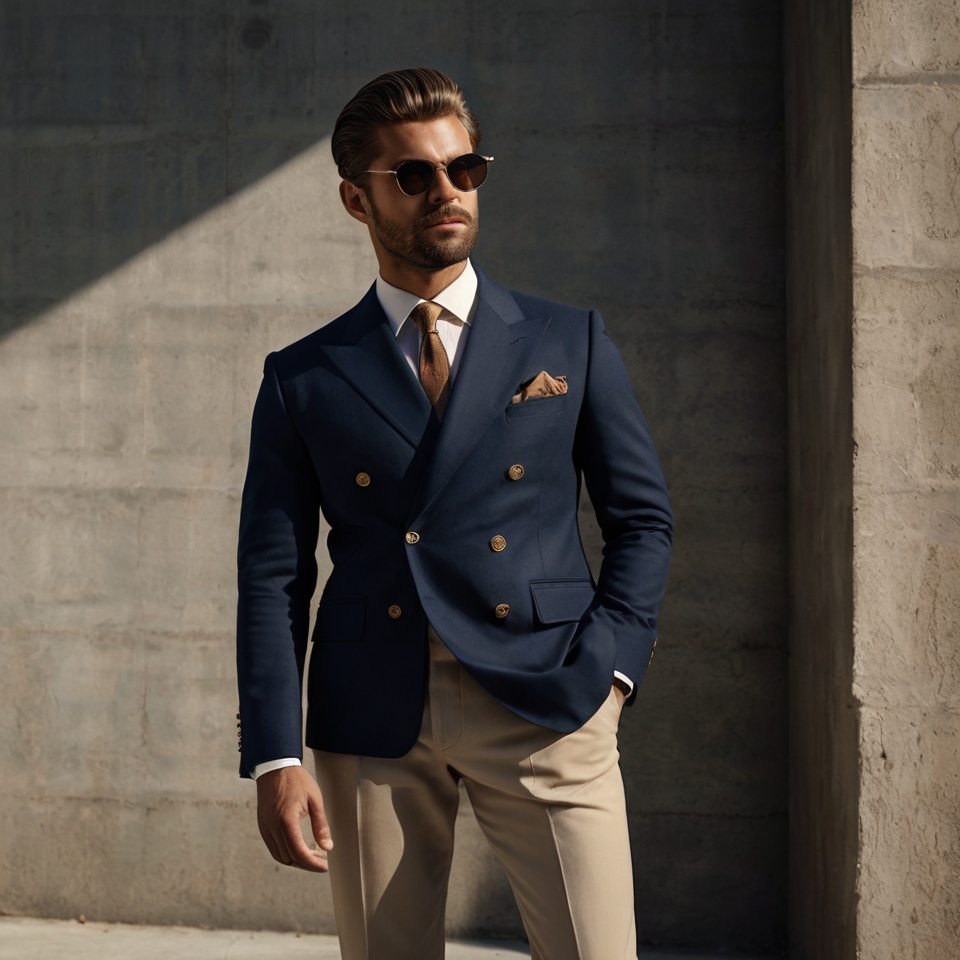
American Old Money Style tends to be more relaxed and pragmatic than its British counterpart. It reflects the less formal American culture and a focus on functionality.
- More Focus on Sporting Elegance: While the suit is still important, sportier elements play a larger role. This includes high-quality polo shirts (often from brands with a long history in the preppy realm), chinos in various colors (khaki is a classic), and comfortable yet stylish casual wear.
- A Broader Color Palette: In addition to classic neutrals, you’ll find soft pastels and bolder, yet still muted, colors.
- High-Quality, Yet Often Less Formal Materials: Cotton (especially Pima cotton), linen, and lightweight wools are popular. The focus is on comfort and practicality.
- Less Formal Accessories: Canvas belts with leather details, high-quality baseball caps (often from prestigious clubs or universities), and sporty yet elegant watches are not uncommon.
- The Influence of Preppy Style: The preppy look, associated with Ivy League elite universities, has significantly influenced American Old Money Style. Elements like rugby shirts, boat shoes, and sweaters casually tied over the shoulders are typical.
Common Threads and the Essence of Old Money Style
Despite these differences, British and American Old Money Style share some fundamental principles:
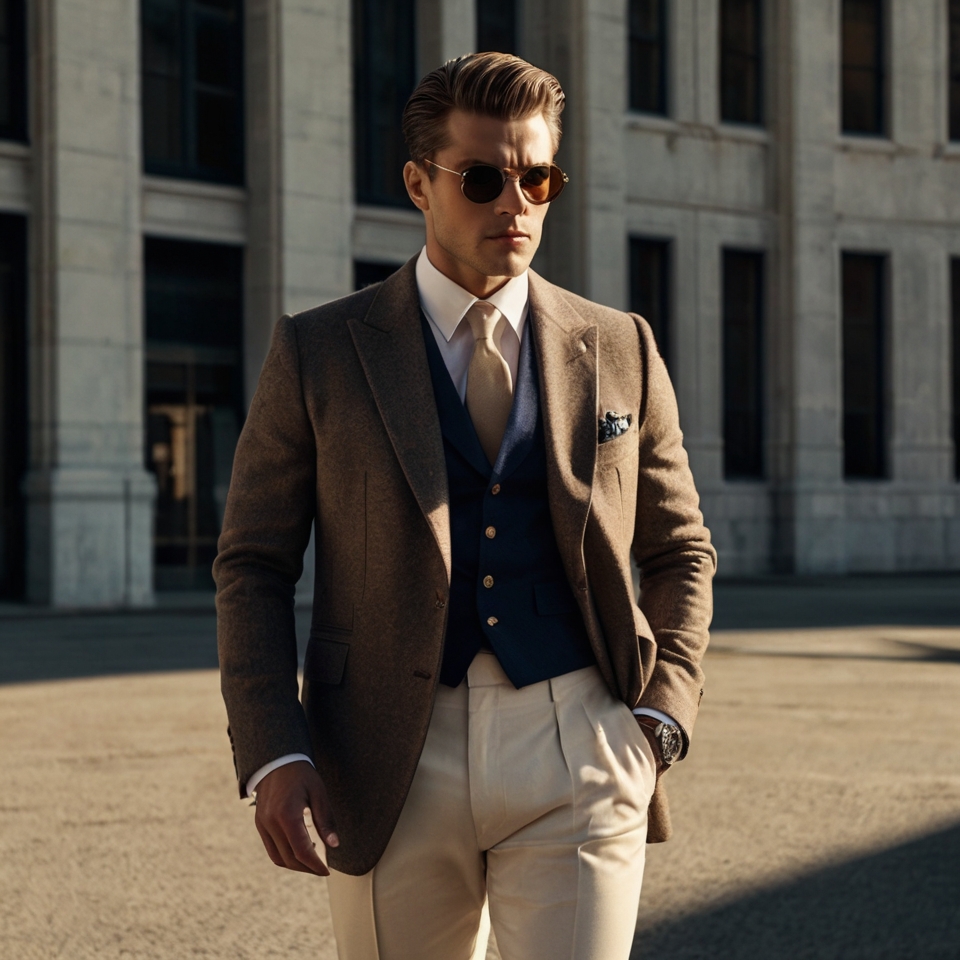
- Quality Over Quantity: Fewer but higher-quality garments that last and age gracefully.
- Understatement: Conspicuous logos and flashy designs are an absolute no-go. Elegance lies in subtlety.
- Timelessness: Trends come and go, but Old Money Style remains constant. It’s about investing in pieces that will still be stylish years from now.
- Impeccable Grooming: No matter how casual the look, it’s always well-maintained and speaks of self-respect.
- Effortless Confidence: The most crucial factor is attitude. Old Money Style is worn with a natural self-assurance, without the need to impress others.
Why This Deeper Dive Matters for MEN’SNORTH Readers:
For the MEN’SNORTH reader, it’s not just about looking good, but also about understanding the background and philosophy behind a particular style. The knowledge of Savile Row’s significance and the subtle differences between British and American Old Money adds another layer of depth to the style. It shows that it’s not just about clothes, but about a way of life characterized by tradition, quality, and understated elegance.
By understanding these nuances, we can authentically adapt the Old Money Style without falling into clichés. It’s about internalizing the principles and interpreting them in our own way – with the same strength and self-assurance that defines MEN’SNORTH.
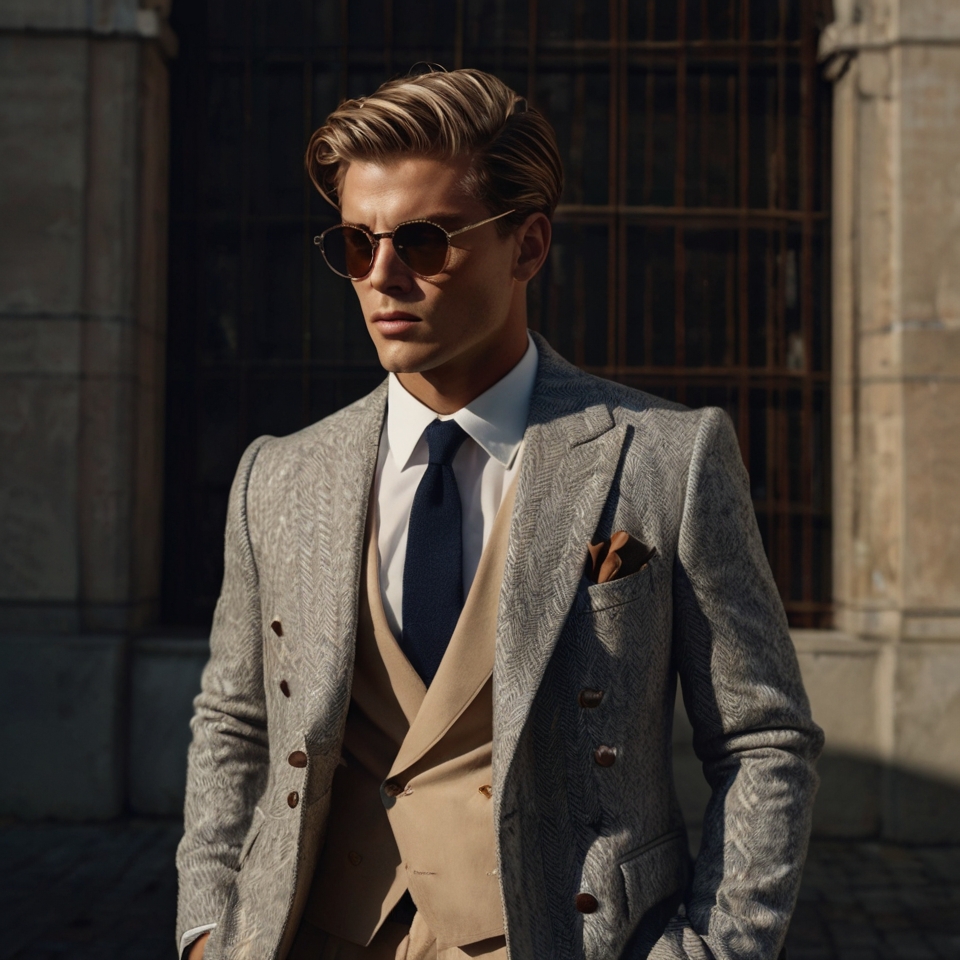
Conclusion: Understatement as a Sign of True Strength
Whether British or American-influenced, Old Money Style is more than just a matter of clothing. It’s an expression of history, values, and an inner attitude. It teaches us that true strength doesn’t lie in loud displays but in cultivated restraint and understated quality. Those who understand and embrace this style have long understood that true success doesn’t need to be shouted – it’s seen and felt.
Stay strong. Stay refined. Dress with intention.
Join the Brotherhood – Get the Newsletter
Why join?
Because average isn’t an option.
Our newsletter delivers raw insights on strength, discipline, and growth – straight to your inbox. No fluff. No excuses. Just real tools to help you lead, build, and conquer.
Join the Brotherhood. Rise above.


Very good